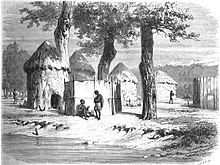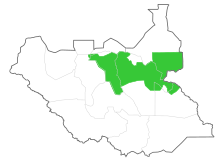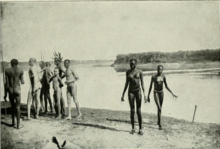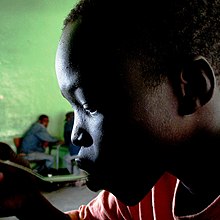The Nilotic peoples are people indigenous to the Nile Valley who speak Nilotic languages. They inhabit South Sudan, Sudan, Ethiopia, Uganda, Kenya, the eastern border area of Democratic Republic of the Congo, Rwanda, Burundi and Tanzania. Among these are the Burun-speaking peoples, Teso people also known as Iteso or people of Teso, Karo peoples, Luo peoples, Ateker peoples, Kalenjin peoples, Karamojong people also known as the Karamojong or Karimojong, Datooga, Dinka, Nuer, Atwot, Lotuko, and the Maa-speaking peoples.

The Kakwa people are a Nilotic ethnic group and part of the Karo people found in north-western Uganda, south-western South Sudan, and north-eastern Democratic Republic of the Congo, particularly to the west of the White Nile river.

Jonglei State is a state of South Sudan with Bor as its centre of government and the biggest city. Jonglei state comprises nine counties: Bor, Akobo, Ayod, Uror, Duk, Nyirol, Pigi, Twic East, and Fangak. Jonglei State is the largest state by area before reorganisation, with an area of approximately 122,581 km2, as well as the most populous according to the 2008 census conducted in present-day South Sudan's second period of autonomy. The boundaries of the state were again changed as a result of a peace agreement signed on 22 February 2020.
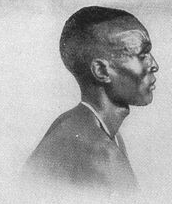
The Dinka people are a Nilotic ethnic group native to South Sudan. The Dinka mostly live along the Nile, from Mangalla-Jonglei to Renk, in the region of Bahr el Ghazal, Upper Nile, and the Abyei Area of the Ngok Dinka in South Sudan.
The Nuer language (Thok Naath) ("people's language") is a Nilotic language of the Western Nilotic group. It is spoken by the Nuer people of South Sudan and in western Ethiopia (region of Gambela). The language is very similar to Dinka and Atuot.

The Second Sudanese Civil War was a conflict from 1983 to 2005 between the central Sudanese government and the Sudan People's Liberation Army. It was largely a continuation of the First Sudanese Civil War of 1955 to 1972. Although it originated in southern Sudan, the civil war spread to the Nuba mountains and the Blue Nile. It lasted for almost 22 years and is one of the longest civil wars on record. The war resulted in the independence of South Sudan 6 years after the war ended.
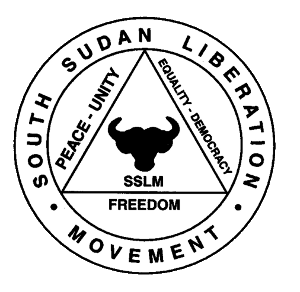
The South Sudan Liberation Movement (SSLM) is an armed group that operates in the Upper Nile Region of South Sudan. The group's creation was announced in November 1999 by people of the Nuer ethnicity who were in both the rebel Sudan People's Liberation Army (SPLA) and the government-allied South Sudan Defence Forces (SSDF) gathered in Waat. The SSLM was declared to be unaligned in the Second Sudanese Civil War, then entering its sixteenth year. The name "South Sudan Liberation Movement" was decided upon the next year, borrowing from the earlier Southern Sudan Liberation Movement, which existed in the 1980s.

The Shilluk is a major Luo Nilotic ethnic group that resides in the northeastern Upper Nile state of South Sudan on both banks of the Nile River in Malakal. Before the Second Sudanese Civil War, the Shilluk also lived in settlements on the northern bank of the Sobat River, close to where the Sobat joins the Nile.

The Anyuak, also known as Anyuaa and Anywaa, are a Luo Nilotic ethnic group inhabiting parts of East Africa. The Anuak belong to the larger Luo family group. Their language is referred to as Dha-Anywaa. They primarily reside in the Gambela Region of western Ethiopia, and South Sudan. Group members number between 200,000 and 300,000 people worldwide. Many of the Anyuak people now follow Christianity. It is one of the first of the Nilotic groups to become almost entirely Christian, following the Shilluk people.

The Murle are a Surmic ethnic group inhabiting the Pibor County and Boma area in Greater Pibor Administrative Area, South Sudan, as well as parts of southwestern Ethiopia. They have also been referred as Beir by the Dinka and as Jebe by the Luo and Nuer, among others. The Murle speak the Murle language, which is part of the Surmic language family. The language cluster includes some adjoining groups in Sudan, as well as some non-contiguous Surmic populations in southwestern Ethiopia.
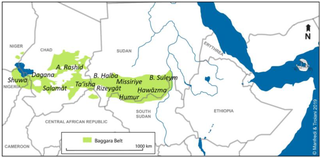
The Messiria, known also under the name of Misseriya Arabs, are a branch of the Baggara ethnic grouping of Arab tribes. Their language is Sudanese Arabic. Numbering over one million, the Baggara are the second largest ethnic group in Western Sudan, extending into Eastern Chad. They are primarily nomadic cattle herders and their journeys are dependent upon the seasons of the year. The use of the term Baggara carries negative connotations as slave raiders, so they prefer to be called instead Messiria.
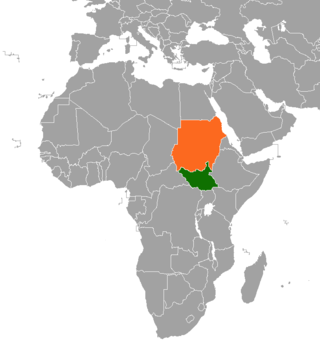
Sudanese nomadic conflicts are non-state conflicts between rival nomadic tribes taking place in the territory of Sudan and, since 2011, South Sudan. Conflict between nomadic tribes in Sudan is common, with fights breaking out over scarce resources, including grazing land, cattle and drinking water. Some of the tribes involved in these clashes have been the Messiria, Maalia, Rizeigat and Bani Hussein Arabic tribes inhabiting Darfur and West Kordofan, and the Dinka, Nuer and Murle African ethnic groups inhabiting South Sudan. Conflicts have been fueled by other major wars taking place in the same regions, in particular the Second Sudanese Civil War, the War in Darfur and the Sudanese conflict in South Kordofan and Blue Nile.
The Atwot (Reel) are a Nilotic ethnic group of South Sudan who live near Yirol in Lakes State. They comprise a majority of the population in the payam of Yirol West.

The Shilluk Kingdom, dominated by the Shilluk people, was located along the left bank of the White Nile in what is now South Sudan and southern Sudan. Its capital and royal residence were in the town of Fashoda. According to Shilluk folk history and neighboring accounts, the kingdom was founded by Nyikang, who probably lived in the second half of the 15th century. A Nilotic people, the Shilluk managed to establish a centralized kingdom that reached its apogee in the late 18th and early 19th centuries, during the decline of the northern Funj Sultanate. In the 19th century, the Shilluk were affected by military assaults from the Ottoman Empire, resulting in the destruction of the kingdom in the early 1860s. The Shilluk king is currently not an independent political leader, but a traditional chieftain within the governments of South Sudan and Sudan. The current Shilluk king is Reth Kwongo Dak Padiet who ascended to the throne in 1993.

South Sudan is home to around 60 indigenous ethnic groups and 80 linguistic partitions among a 2021 population of around 11 million. Historically, most ethnic groups were lacking in formal Western political institutions, with land held by the community and elders acting as problem solvers and adjudicators. Today, most ethnic groups still embrace a cattle culture in which livestock is the main measure of wealth and used for bride wealth.
The history of South Sudan comprises the history of the territory of present-day South Sudan and the peoples inhabiting the region.
Ethnic violence in South Sudan has a long history among South Sudan's varied ethnic groups. South Sudan has 64 tribes with the largest being the Dinka, who constitute about 35% of the population and predominate in government. The second largest are the Nuers. Conflict is often aggravated among nomadic groups over the issue of cattle and grazing land and is part of the wider Sudanese nomadic conflicts.

The South Sudanese Civil War was a multi-sided civil war in South Sudan between forces of the government and opposition forces. In December 2013, President Salva Kiir accused his former deputy Riek Machar and 10 others of attempting a coup d'état. Machar denied trying to start a coup and fled to lead the Sudan People's Liberation Movement-in-Opposition (SPLM-IO). Fighting broke out between the Sudan People's Liberation Movement (SPLM) and SPLM-IO, igniting the civil war. Ugandan troops were deployed to fight alongside the South Sudanese government. The United Nations has peacekeepers in the country as part of the United Nations Mission in South Sudan (UNMISS).
The 2014 Bentiu massacre occurred on 15 April 2014 in the town of Bentiu, in the north of South Sudan, during the South Sudanese Civil War. The attack has been described by The Economist as the "worst massacre" of the civil war.
The Dinka and Nuer are the two largest ethnic groups in South Sudan. Conflict over pastures and cattle raids has been happening between these two ethnic groups as they battle for grazing their animals. In 2013, the former Vice president Riek Machar who is a Nuer, was dismissed by the president of South Sudan, Salva Kiir, who is a Dinka, which created conflict between the Dinka and Nuer people in South Sudan.
